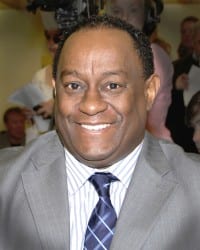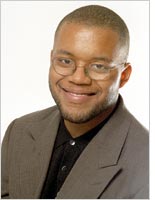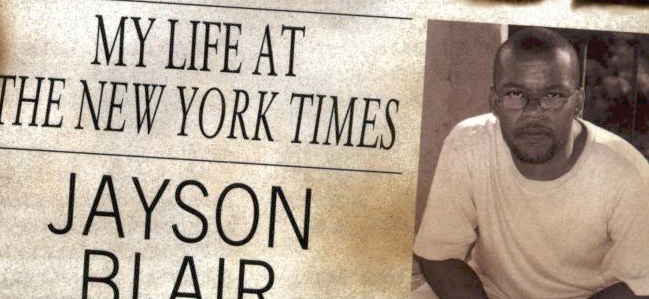Rating the Apologies of Plagiarists: Journalism Edition
 Imagine for a moment that you’re a repeat plagiarists and you’ve just been caught. Your whole world is crashing down, your career is most likely over and the life you knew won’t exist much longer.
Imagine for a moment that you’re a repeat plagiarists and you’ve just been caught. Your whole world is crashing down, your career is most likely over and the life you knew won’t exist much longer.
Your only hope for salvaging anything of your reputation is an apology and it has to be a good one.
Fortunately for this imaginary version of you, this is a road well-tread by other serial plagiarists who built careers on plagiarism and then were called to apologize for their misdeeds. Unfortunately though, most of the ones that have come before are not exactly role models for how to apologize for plagiarism, or anything else.
With that in mind, I’m taking a look at some of the better-known plagiarists and analyzing/rating their apologies. Admittedly, this post is mostly in good fun and meant to be at least somewhat humorous but there is an underlying point to all of this: Apologies for plagiarism are rarely good apologies, if they qualify as apologies at all.
So lets start out by looking at three of journalism’s most famous plagiarists and how they said they were sorry.
(Note: I’m only looking at famous serial plagiarists for this, so no Fareed Zakaria, Margaret Wente, etc. Also, the scores are based very loosely on Elements of an Effective Apology by Marsha Wanger at Columbia University)
Chris Spence
 Of the people on this list Spence is easily the least well-known, unless you are from Canada.
Of the people on this list Spence is easily the least well-known, unless you are from Canada.
Spence was the Director of Education of the Toronto District School Board, the nation’s largest school district, and wrote a variety of oped pieces for The Toronto Star, a major paper in Toronto, as part of his duties.
However, after plagiarism was observed in one of his columns, Spence apologized and offered to take steps to prevent future problems. Though he resisted calls for his resignation, after additional instances of plagiarism were uncovered, he resigned his post. All in all, the scandal lasted barely a week.
The Apology
On January 5th, 2013, Spence published a statement apologizing for the plagiarism. The statement was before other instances of plagiarism were found and it apologizes profusely for his misdeeds noting that in “no less than five different instances” did he fail to give credit to others in that piece.
In the apology, Spence declines to provide excuses and then proceeds to provide several excuses. He also lays out steps he’s going to take to ensure it never happens again including correcting the record and enrolling himself in an ethics course.
All in all, the apology clocks in at about 500 words, approximately a quarter of the length of this article, and manages to say nothing about the majority of his plagiarism.
Analysis
On one hand, Spence’s apology is actually fairly contrite. He apologizes and, despite slipping in his excuses, seems to be interested in genuinely clearing the record and making amends.
However, the apology is missing two key things.
First, though he says sorry to all of the people who trusted him and to The Toronto Star, he never once says sorry to the people he lifted from. Second, and more importantly, it doesn’t acknowledge that the article was not an isolated and, as would soon be discovered, part of a pattern of plagiarism.
Scores (1-10)
- Honesty: 2 His apology is very honest about the one piece it covers but skips over all of the others.
- Contriteness: 4 Spence seems genuinely remorseful but still trots out excuses (albeit sneakily).
- Acknowledgement of Harm: 4 Spence does a decent job acknowledging harm to The Star and those who trusted him, but not to the people he pulled from.
- Future Actions: 3 An ethics course is a weak alteration for someone who already says that they knew better. Still, Spence’s stated efforts to clear the record sounded decent at the time.
Total: 13/40
Final Word
Spence’s apology might have been decidedly average if he hadn’t conveniently omitted all of the other plagiarisms that weren’t covered in it. As it is, his apology is a transparent attempt to save his own skin and his job and, in that regard, it failed miserably.
Jayson Blair
 By now Blair’s story hardly needs repeating. He was a young journalist at the New York Times who was caught plagiarizing, fabricating and lying through much of his career.
By now Blair’s story hardly needs repeating. He was a young journalist at the New York Times who was caught plagiarizing, fabricating and lying through much of his career.
When the scandal first hit, Blair virtually disappeared, even checking into a mental hospital for a time. His apology wouldn’t come until months later when, after being offered a six-figure advance, Blair published a book on his story.
The Apology
Blair’s “apology” came primarily in book form (as well as TV interviews promoting the book). It is a 300-page behemoth that focuses largely on Blair’s time at the paper, going through everything from 9/11 to dubious details about the paper operated while Blair was there.
However, the opening chapters (as well as the closing ones to a lesser degree) focus somewhat on Blair’s atonement. The book starts with the sentence, “I lied and I lied — and then I lied some more. I lied about where I had been, I lied about where I had found information, I lied about how I wrote a story” before kicking into the actual story.
But just because a confession and apology was longer does not necessarily make it better.
Analysis
Right off the bat one has to deduct a few points from all categories considering how handsomely Blair was paid to write his apology. It’s unclear if he would have said much of anything without the advance check dangling in front of him.
But even without that in mind, the apology is weak. I did a more thorough debunking previously but it should suffice to say that his apology not only ignore misdeeds from before his tenure at The Times, but also was nothing but excuses, blaming his problem on a substance abuse problem (and his recovery from it), psychological issues and disillusionment with the paper and journalism.
Scores (1-10)
- Honesty: 2 Blair never really comes clean about everything he did. He omits past plagiarisms and tries to shift the blame as much as possible.
- Contriteness: 2 Though Blair starts out sounding like a soul seeking confession, his tone changes and he even jokes about various journalistic misdeeds such giving better press to a company so he can sleep with a representative of it. He almost never sounds sorry.
- Acknowledgement of Harm: 3 Blair acknowledges that people around him were, including his close friend Zuza. However, he also wonders why his scandal was so much worse than others at the paper.
- Future Actions: 5 Blair does make a decent attempt to illustrate he is a new person, one who is under treatment for bipolar disorder and seeking psychiatric help. It’s possibly the only thing he did remotely well.
Total: 12/40
Final Word
For the most part, Blair is a textbook example of how not to apologize. He makes excuses, tries to shift blame and works to put other people in a negative light rather than being honest about his misdeeds.
The only solace I have is that more recent interviews by Blair seem to indicate a healthier perspective on the ordeal and his actions.
Jonah Lehrer
 Jonah Lehrer is another plagiarist that needs no introduction. A well-known and well-respected science journalist, he wrote for a variety of top publications including Wired, The Boston Globe, The New York Times, The Wall Street Journal and, right before his scandal, had landed a full-time job at The New Yorker.
Jonah Lehrer is another plagiarist that needs no introduction. A well-known and well-respected science journalist, he wrote for a variety of top publications including Wired, The Boston Globe, The New York Times, The Wall Street Journal and, right before his scandal, had landed a full-time job at The New Yorker.
However, Lehrer was first found to have been recycling content from his previous stories, including across papers. That prompted further research, which found that he had fabricated a Bob Dylan quote and that, in turn led to his resignation and a virtual feeding frenzy that turned up a long trail of fabrication, plagiarism and self-plagiarism.
The Apology
Like Jayson Blair, Lehrer went mostly silent after his scandal broke. Though, after his resignation, he famously said “The lies are over now”, he largely stayed out of the limelight until The Knight Foundation offered him $20,000 to speak at a conference they were hosting.
There, he gave a one-hour talk where he briefly explained what he did and went on to describe how he would work differently if he were allowed to write again, namely through the use of “Standard Operating Procedures” that involve outside help to check his work, and why he thinks what happened happened.
Analysis
As with Blair, I did a more thorough debunking of Lehrer’s apology earlier. However, it should suffice to say that, beyond his introduction, he didn’t speak much about what he had done and, instead, compared himself to others who had made honest mistakes and even blamed his problems, in part, on his high IQ and his arrogance.
His apology came across as insincere and arrogant. His solution, the “Standard Operating Procedures”, seemed off target and like an attempt to shift the burden of his honesty onto someone else.
In short, Lehrer offered less of an apology and more of a sales pitch to get himself back into writing.
Scores (1-10)
- Honesty: 2 It’s hard to put a value on his honesty because he said so little. But he minimized his misdeeds, glanced over much of what he’d done and never took responsibility for his actions in any significant way.
- Contriteness: 1 At no point in his speech did Lehrer even seem sorry. He referred to his misdeeds as “errors” and “mistakes” and routinely compared himself to people who had made oversights.
- Acknowledgement of Harm: 1 Nowhere in his apology did Lehrer talk in any meaningful way about the people he had hurt, lifted from or lied to (other than one journalist). Lehrer, at times, seemed almost proud of what he’d done and as if he felt it was because he was smarter than others that he did it.
- Future Actions: 2 Lehrer gets a point for proposing something, but his suggestions were completely off mark, turning the burden of his honesty over to a third party. Furthermore, Standard Operating Procedures are designed to defend against accidental missteps, not ethical violations.
Total: 6/40
Final Word
Lehrer’s attempt at an apology is one of the worst ever, possibly in the history of apologies. It missed every mark possible and, took every chance to shift blame/responsibility and even managed to insult the audience.
Lehrer had a unique opportunity to clear the air, apologize and share his experience with others in his field. Instead he blew it and forced The Knight Foundation to admit having him speak was a mistake.
Perhaps the worst part, however, is that Jonah Lehrer is working on another book and, according to several reports, the leaked book proposal contains evidence of plagiarism.
Even though it isn’t the most compelling evidence, the fact it’s there at all shows how little Lehrer has learned and grown.
Bottom Line
When it’s all said and done, of these plagiarizing journalists, Spence was clearly the best and that is rather sad as his was a transparent attempt to save his job and actually hide the majority of his misdeeds.
While his apology might have been an attempt to bury a long history of plagiarism, at least it didn’t insult the audience or try to shift blame. Spence’s “victory” here isn’t a sign he wrote a good apology, but rather, that the others were just worse.
It seems there are no good examples here for how to write an apology letter. Maybe other areas of study will do better but this could actually be an insight in the mindset of a plagiarist.
After all, it says something interesting when you can’t apologize effectively for your misdeeds. An apology means anticipating how others feel and what they want from you, something none of these men did well.
It likely means nothing, but it is certainly food for thought.
Want to Reuse or Republish this Content?
If you want to feature this article in your site, classroom or elsewhere, just let us know! We usually grant permission within 24 hours.
